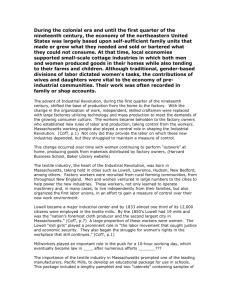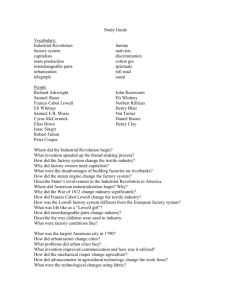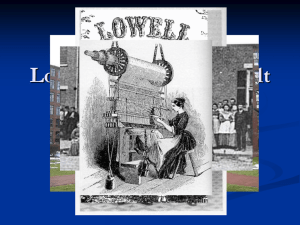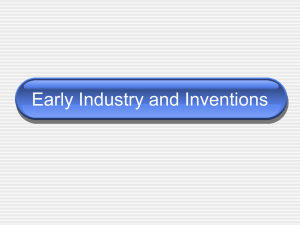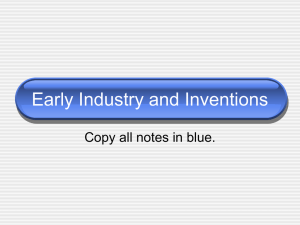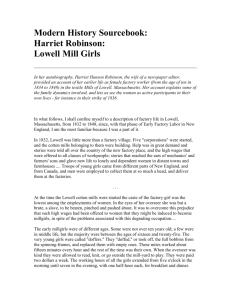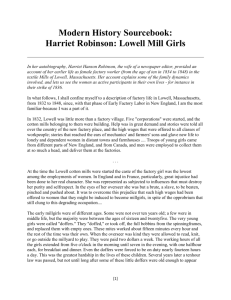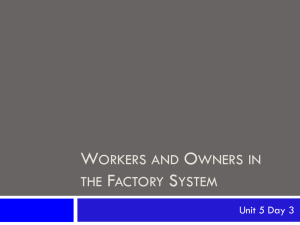Vocab 11 - Economic Growth
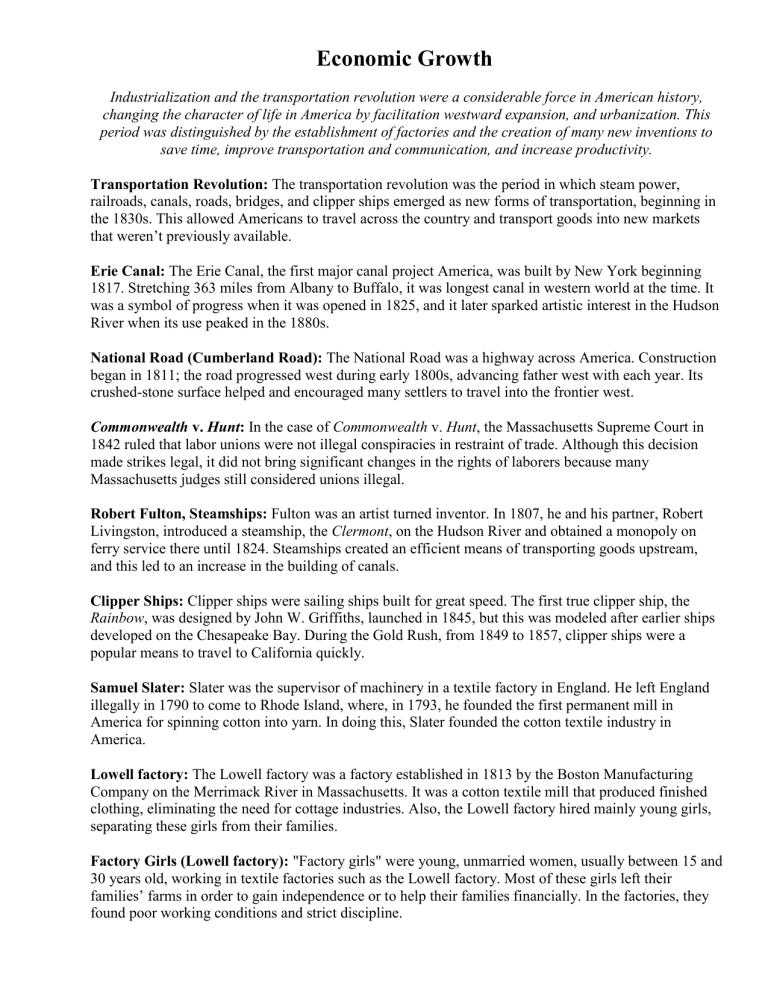
Economic Growth
Industrialization and the transportation revolution were a considerable force in American history, changing the character of life in America by facilitation westward expansion, and urbanization. This period was distinguished by the establishment of factories and the creation of many new inventions to save time, improve transportation and communication, and increase productivity.
Transportation Revolution: The transportation revolution was the period in which steam power, railroads, canals, roads, bridges, and clipper ships emerged as new forms of transportation, beginning in the 1830s. This allowed Americans to travel across the country and transport goods into new markets that weren’t previously available.
Erie Canal: The Erie Canal, the first major canal project America, was built by New York beginning
1817. Stretching 363 miles from Albany to Buffalo, it was longest canal in western world at the time. It was a symbol of progress when it was opened in 1825, and it later sparked artistic interest in the Hudson
River when its use peaked in the 1880s.
National Road (Cumberland Road): The National Road was a highway across America. Construction began in 1811; the road progressed west during early 1800s, advancing father west with each year. Its crushed-stone surface helped and encouraged many settlers to travel into the frontier west.
Commonwealth v. Hunt: In the case of Commonwealth v. Hunt , the Massachusetts Supreme Court in
1842 ruled that labor unions were not illegal conspiracies in restraint of trade. Although this decision made strikes legal, it did not bring significant changes in the rights of laborers because many
Massachusetts judges still considered unions illegal.
Robert Fulton, Steamships: Fulton was an artist turned inventor. In 1807, he and his partner, Robert
Livingston, introduced a steamship, the Clermont , on the Hudson River and obtained a monopoly on ferry service there until 1824. Steamships created an efficient means of transporting goods upstream, and this led to an increase in the building of canals.
Clipper Ships: Clipper ships were sailing ships built for great speed. The first true clipper ship, the
Rainbow , was designed by John W. Griffiths, launched in 1845, but this was modeled after earlier ships developed on the Chesapeake Bay. During the Gold Rush, from 1849 to 1857, clipper ships were a popular means to travel to California quickly.
Samuel Slater: Slater was the supervisor of machinery in a textile factory in England. He left England illegally in 1790 to come to Rhode Island, where, in 1793, he founded the first permanent mill in
America for spinning cotton into yarn. In doing this, Slater founded the cotton textile industry in
America.
Lowell factory: The Lowell factory was a factory established in 1813 by the Boston Manufacturing
Company on the Merrimack River in Massachusetts. It was a cotton textile mill that produced finished clothing, eliminating the need for cottage industries. Also, the Lowell factory hired mainly young girls, separating these girls from their families.
Factory Girls (Lowell factory): "Factory girls" were young, unmarried women, usually between 15 and
30 years old, working in textile factories such as the Lowell factory. Most of these girls left their families’ farms in order to gain independence or to help their families financially. In the factories, they found poor working conditions and strict discipline.
Ten-Hour movement: The ten-hour movement was the attempt by workers to obtain restrictions on the number of hours they worked per day. They wanted to limit the day to 10 hours, from the 12 or 14 hour days that were not uncommon. The movement was supported by Lowell Female Reform Association and other reform associations.
Elias Howe: Howe invented the sewing machine in 1845 and patented it in 1846. After a difficult battle defending his patent, he made a fortune on his invention. The sewing machine allowed clothing to be stitched in factories very quickly, contributing to the transition from handmade garments to inexpensive, mass-produced clothing.
Eli Whitney, Interchangeable Parts: Whitney was an inventor who introduced the concept of interchangeable parts in 1798. The tools and machines he invented allowed unskilled workers to build absolutely uniform parts for guns, so that the whole gun no longer had to be replaced if a single part malfunctioned or broke. This was the beginning of mass production.
Cyrus McCormick, Mechanical Reaper: McCormick was an inventor who improved upon previous designs for the mechanical reaper. He patented his reaper in 1834 and built a factory to mass produce it in 1847. This invention lessened the work of western farmers by mechanizing the process of harvesting wheat.
Samuel F.B. Morse, Telegraph: Morse invented the telegraph in 1844. This invention was enthusiastically accepted by the American people; telegraph companies were formed and lines erected quickly. The telegraph allowed rapid communication across great distances, usually transmitting political and commercial messages.
